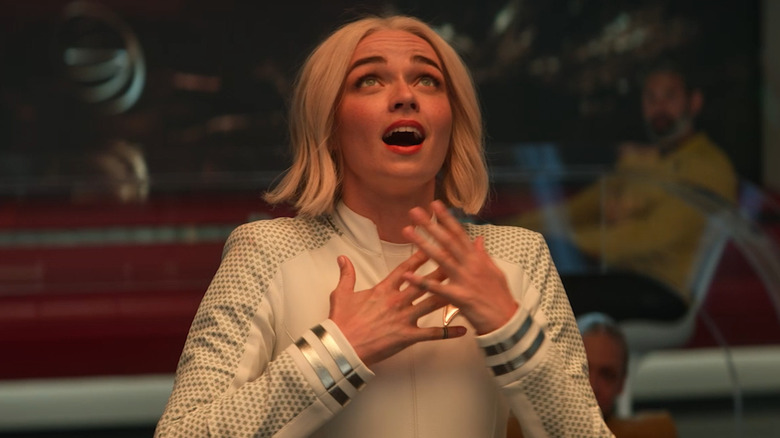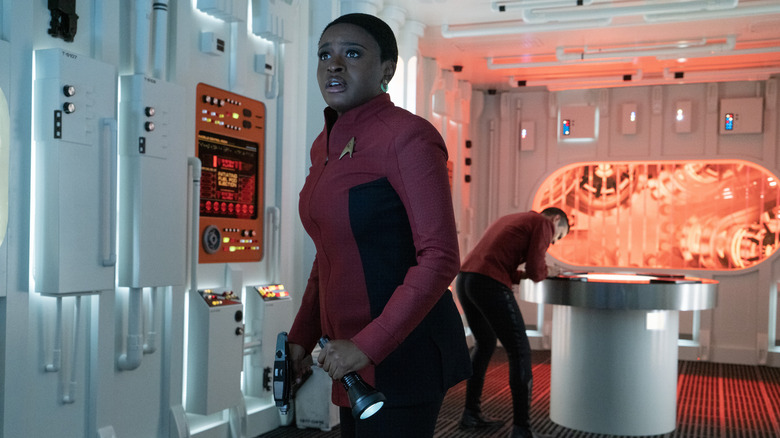The Enterprise's Lighting Is The 'Mood Board' For Each Episode Of Star Trek: Strange New Worlds
In the rarely-used lyrics for Alexander Courage's original "Star Trek" theme song — lyrics which were written by Gene Roddenberry so he could say he co-wrote the song and leech off half the royalties — a plaintive lover coos, "Beyond the rim of the star-light, my love is wand'ring in star-flight."
Frankly, the lyrics to the "Star Trek" theme song are extremely corny and have little, if anything, to do with "Star Trek," unless the show was secretly being told from the perspective of Captain Kirk's girlfriend, who he left behind in Iowa. But in their schmaltziness there lies a glimmer of something real, the start of a discussion about the way those old scientists were on an emotional as well as literal journey. Surrounded by stars, nevertheless in a void.
Highlighting the personal feelings of the characters in "Star Trek" requires more than good acting and writing, it also requires a lot of actual, literal lighting. Whether the hues stem from weird new nebulas, deadly phaser fire, or the lights emanating from a computer console, the cinematography in "Star Trek" allows for great ingenuity and experimentation. That tradition continues in "Star Trek: Strange New Worlds," where cinematographer Benji Bakshi ("Bone Tomahawk") treats the whole starship Enterprise as a constantly evolving "mood board" for the characters, the scenes, and the episodes.
Star Trek into light-ness
In an interview with /Film's Witney Seibold, Benji Bakshi described the malleability of the lighting in "Strange New Worlds" and the way the show's cinematographers and production designers generate different sensations within the same sets.
"I think if you really kind of compare some of the episodes one-to-one," Bakshi said, "you'll start to see a lot of variation in lighting the same sets, especially lighting new sets and new worlds. We get to really push it. I'm told that I should consider the ship as the 'mood board,' the 'feeling' of the episode."
Bakshi said the tools were already in place: "One of the other amazing things that Jonathan Lee, the production designer, and Glen Keenan, the first-season cinematographer, did really successfully was they embedded a ton of LED lighting within the surfaces: walls, ceilings, and even floors of the sets. [So] we can utilize and light the characters and give the space a feeling."
"In episode 6 ["Lost in Translation"], in particular, the ship goes through a couple of different light levels, and within the same sets, you can see those transitions in different parts of the episode," Bakshi added, referring to the episode where Uhura (Celia Rose Gooding) experiences terrifying hallucinations throughout the ship. In a season punctuated by comedy episodes and even a musical, "Strange New Worlds" once again demonstrates that one of the greatest strengths of "Star Trek" is its variety.
"So we really have a lot of freedom," Bakshi said. "And I enjoy that because each episode is really its own genre and there can be some consistency. The sick bay needs to feel like a hospital, this and that, but sometimes the colors are different and it's really a lot of fun because you are telling the story of the continuing crew, but each week, you really don't know what you're going to get."

